See the best wildlife photos of the year before they arrive at the ROM
A showcase of the best works from the 58th annual Wildlife Photographer of the Year awards arrives at the Royal Ontario Museum this weekend
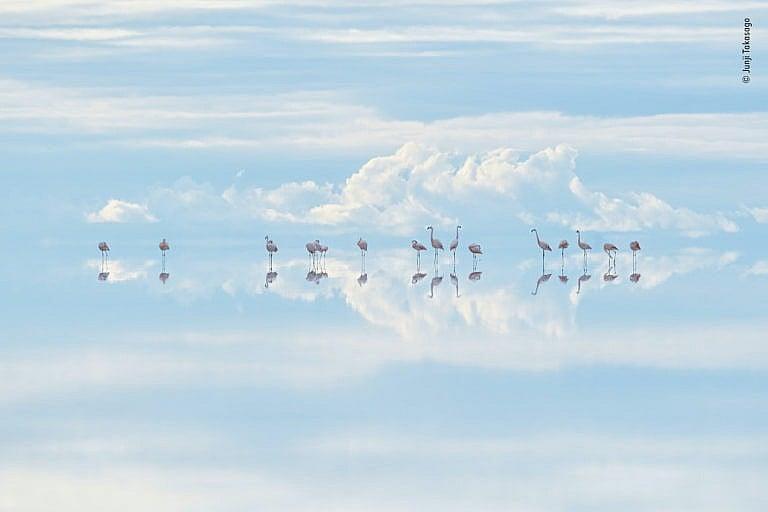
(ROM/Junji Takasago)
Share
Each year, amateur and professional photographers from around the world take part in the Wildlife Photographer of the Year awards—widely considered the planet’s most prestigious nature photography competition. Organized by London’s Museum of Natural History, the competition began in 1965.
Photographers compete in categories like “Animals in Their Environment,” “Urban Wildlife,” “Animal Portraits” and “Underwater.” This year’s winner, American photographer Karine Aigner, captured a remarkable close-up shot of a group of cactus bees spinning over hot sand in Texas. Another photographer, 16-year-old Katanyou Wuttichaitanakorn from Thailand, earned the Young Wildlife Photographer of the Year award for his vivid image of a Bryde’s whale’s open mouth.
For the eighth consecutive year, the Wildlife Photographer of the Year winners and nominees will be showcased at the Royal Ontario Museum beginning this weekend, with nearly 100 images on display.
Follow Maclean’s on Instagram to check out this year’s winners. Here’s a look at some of the standouts:
Winner: Behaviour
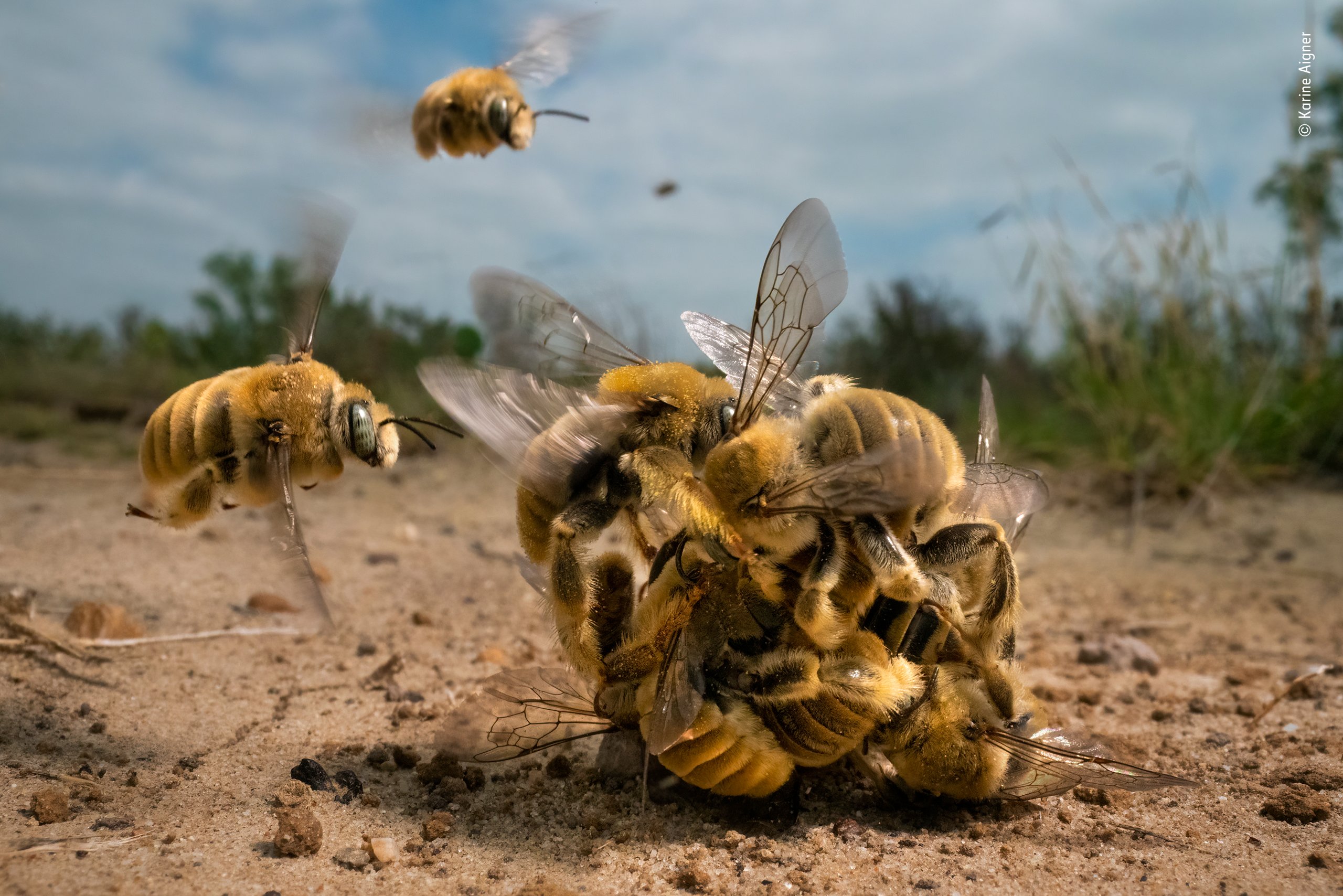
From the ROM: “Using a macro lens, Karine Aigner captured the flurry of activity as a buzzing ball of cactus bees spun over the hot sand. After a few minutes, the pair at its centre—a male clinging to the only female in the scrum—flew away to mate.
The world’s bees are under threat from habitat loss, pesticides and climate change. With 70 per cent of bee species nesting underground, it is increasingly important that areas of natural soil are left undisturbed.”
Winner: Young Photographer of the Year
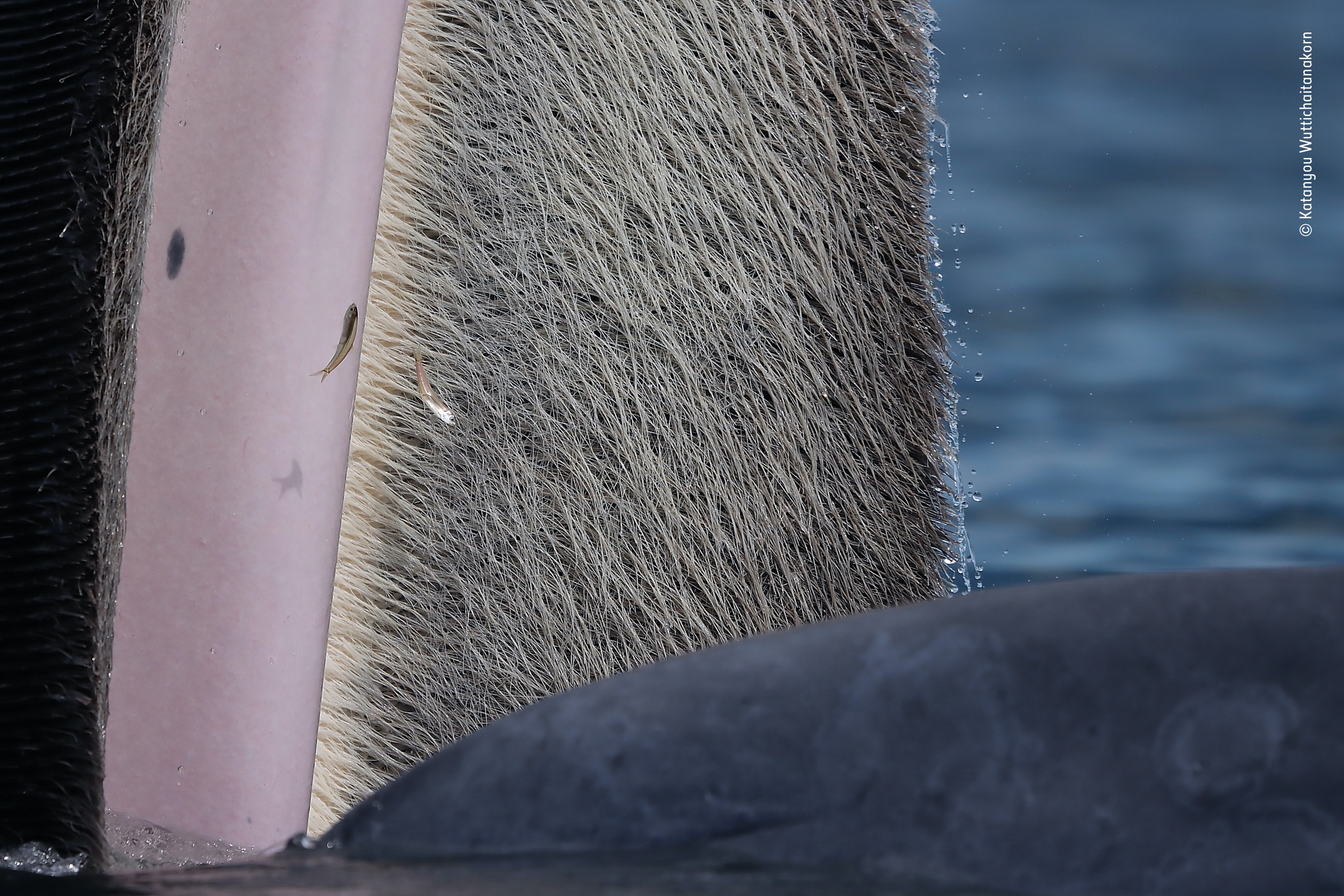
“Following government tourism guidelines, the tour boat Katanyou Wuttichaitanakorn was travelling on turned off its engine as the whale appeared close by. This meant that Katanyou had to steady his hands to capture this close-up composition as the boat rocked in the swell.
Bryde’s whales have up to 370 pairs of grey-coloured plates of baleen growing inside their upper jaws. The plates are made of keratin, a protein that also forms human hair and nails, and are used to filter small prey from the ocean.”
Winner: Plants and Fungi
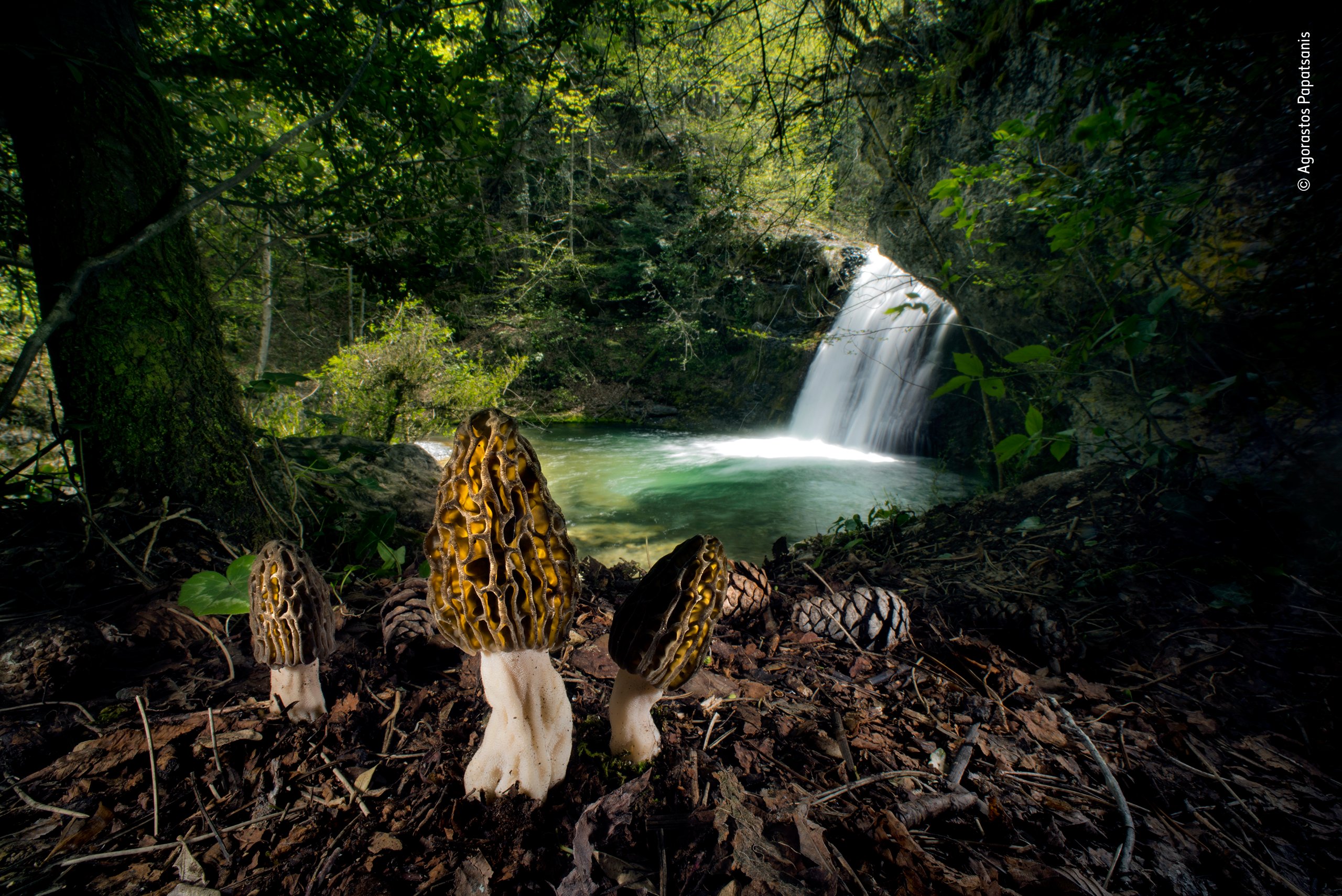
“Enjoying the interplay between fungi and fairy tales, Agorastos Papatsanis wanted to create a magical scene. He waited for the sun to filter through the trees and light the water in the background, then used a wide-angle lens and flashes to highlight the morels’ labyrinthine forms.
Morels are regarded as gastronomic treasures in many parts of the world because they are difficult to cultivate, yet in some forests they flourish naturally.”
Winner: Urban Wildlife
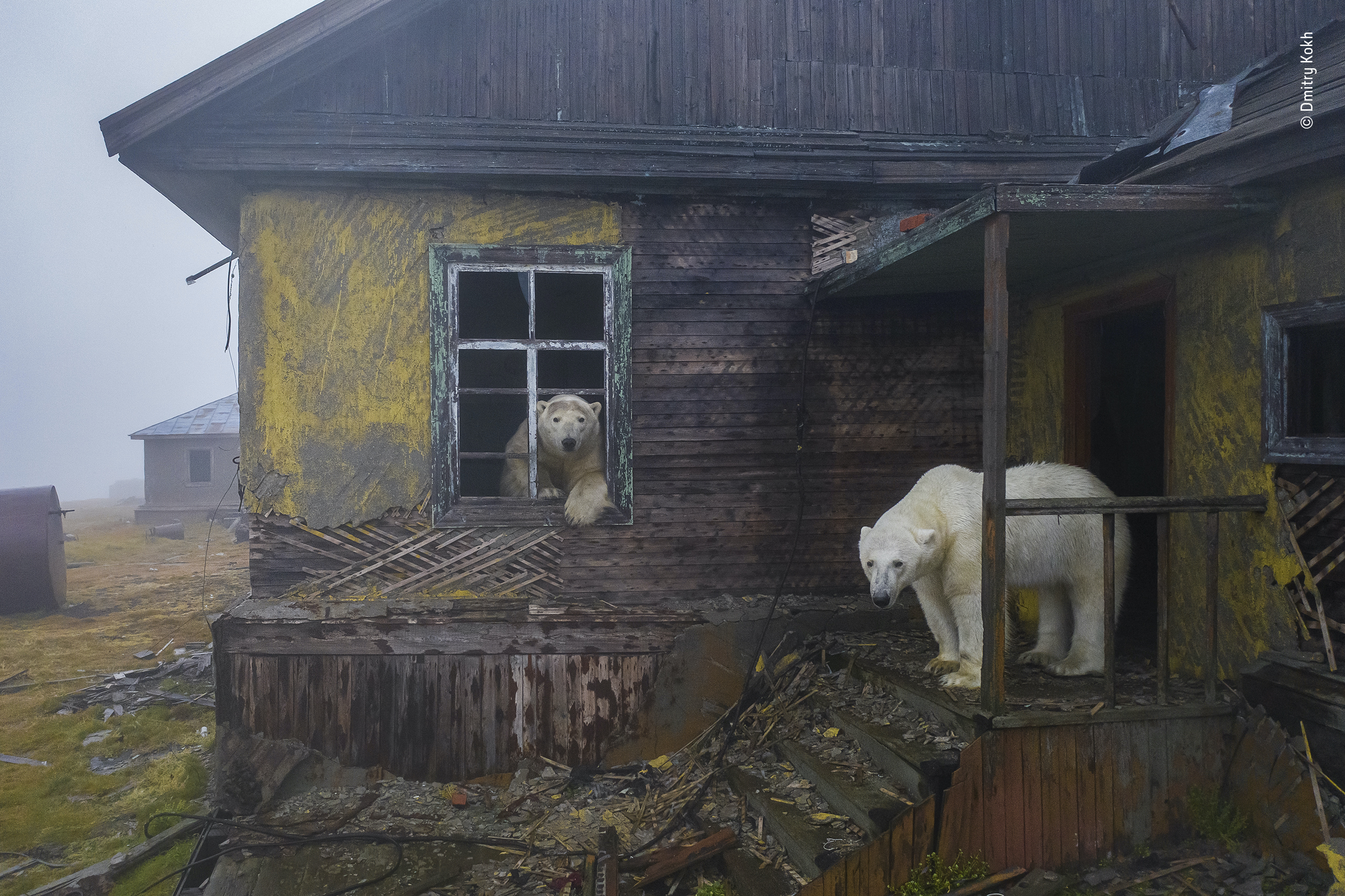
“On a yacht, seeking shelter from a storm, Dmitry Kokh spotted the polar bears roaming among the buildings of the long-deserted settlement. As they explored every window and door, Dmitry used a low-noise drone to take a picture that conjures up a post-apocalyptic future.
In Russia’s Chukchi Sea region, the normally solitary bears usually migrate further north in the summer, following the retreating sea ice they depend on for hunting seals, their main food. If loose pack ice stays near the coast of this rocky island, bears sometimes investigate.”
Winner: Natural Artistry
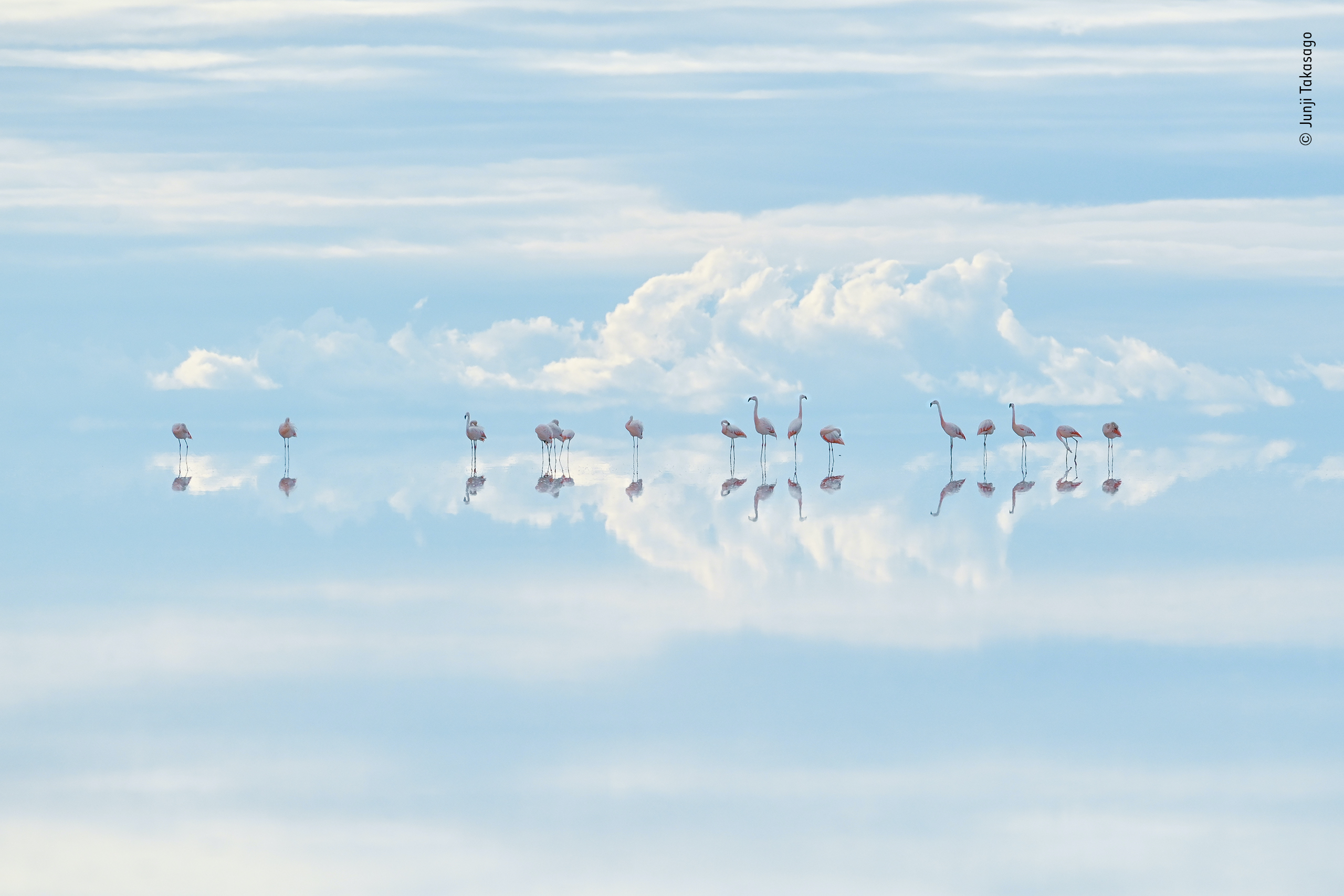
“Photographer Junji Takasago crept toward the preening group of Chilean flamingos. Framing their choreography within the reflected clouds, he fought back his altitude sickness to capture this dream-like scene.
High in the Andes, Salar de Uyuni is the world’s largest saltpan. It is also one of Bolivia’s largest lithium mines, which threatens the future of these flamingos. Lithium is used in batteries for phones and laptops. Together we can help decrease demand by recycling old electronics.”
Winner: Portfolio

“Underwater photographer and biologist Laurent Ballesta has led a series of major expeditions, all involving scientific mysteries and diving challenges, and all resulting in unprecedented images. He has won multiple Wildlife Photographer of the Year prizes, including the grand title award in 2021.
His expedition to Antarctica, exploring its vast underwater biodiversity, took two years to plan, a team of expert divers, and specially developed kit. His 32 dives in water temperature down to -1.7 ̊ C included the deepest, longest dive ever made in Antarctica.”
For more of the best wildlife photography of 2022 follow Maclean’s on Instagram by clicking here.